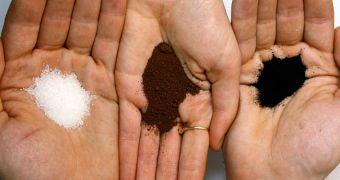A new article on the NASA Earth Observatory website details the composition and structure of aerosols, fine particles that can be found in the air around us at all times, even if the atmosphere looks clean and clear.
With every deep breath air you take in, you also inhale up to tens of millions of very tiny specks of matter called aerosols, which include solid particles and liquid droplets.
There are now very few places on the face of the planet where you can hope to go and not find these particles. More importantly, they play a critical role in determining the course of global warming and climate change.
Aerosols are airborne particles in their natural state, and they can drift in the stratosphere for thousands of miles before settling down on surfaces. In this sense, people living in New York may be inhaling aerosols that originated in Sahara or beyond.
Smoke, ash, and soot are terms often used in the media to describe aerosols. Other fields of science call them nanoparticles, particulate matter, and ultra-fine, fine, or coarse matter, depending on each researcher's specialty.
Most commonly, this type of matter is made up of chemicals such as sulfates, organic carbon, black carbon (soot), nitrates, mineral dust, and sea salt. The latter evaporates from oceans and seas.
But aerosols almost never remain as separate chemicals. They are in the habit of coming together more often than not, forming a wide array of molecular mixtures that range from harmless to very damaging.
An estimated 90 percent of all aerosols are particles produced in nature, such as volcanic ash, sea salt, dust and so on. The remaining 10 percent are man-made particles, that can be found primarily above cities and industrial parks.
Human-made particles come from burning biomass and fossil fuels, from incinerators, smelters, power plants and automobiles. Deforestation, animal growing and over-grazing also produce aerosols.
Sulfates, nitrates, black carbon and organic carbon are the main types of man-made aerosols, and they have a host of side-effects on human health, including promoting asthma, and other diseases of the respiratory system.
Once in the atmosphere, aerosols start to play an important role on the environment. Carbon dioxide and methane are potent greenhouse gases for example, and they help keep more heat from the Sun from being radiated back into space.
Other particles influence the way clouds are formed, therefore skewing the planet's water cycle and so on.

 14 DAY TRIAL //
14 DAY TRIAL //